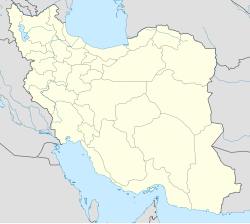Khvormuj Persian: خورموج | |
|---|---|
City | |
 Khalo Hossein Dashti Square in Khvormuj | |
| Coordinates: 28°39′26″N51°22′52″E / 28.65722°N 51.38111°E [1] [2] | |
| Country | Iran |
| Province | Bushehr |
| County | Dashti |
| District | Central |
| Area | |
• Total | 1,280 km2 (490 sq mi) |
| Population (2019) [3] | |
• Total | 60,942 |
| • Density | 47.6/km2 (123/sq mi) |
| Time zone | UTC+3:30 (IRST) |
Khvormuj (Persian : خورموج) [a] is a city in the Central District of Dashti County, Bushehr province, Iran, serving as capital of both the county and the district. [5] The narrow river Shur traverses the valley, 7 km to the west of the city.


